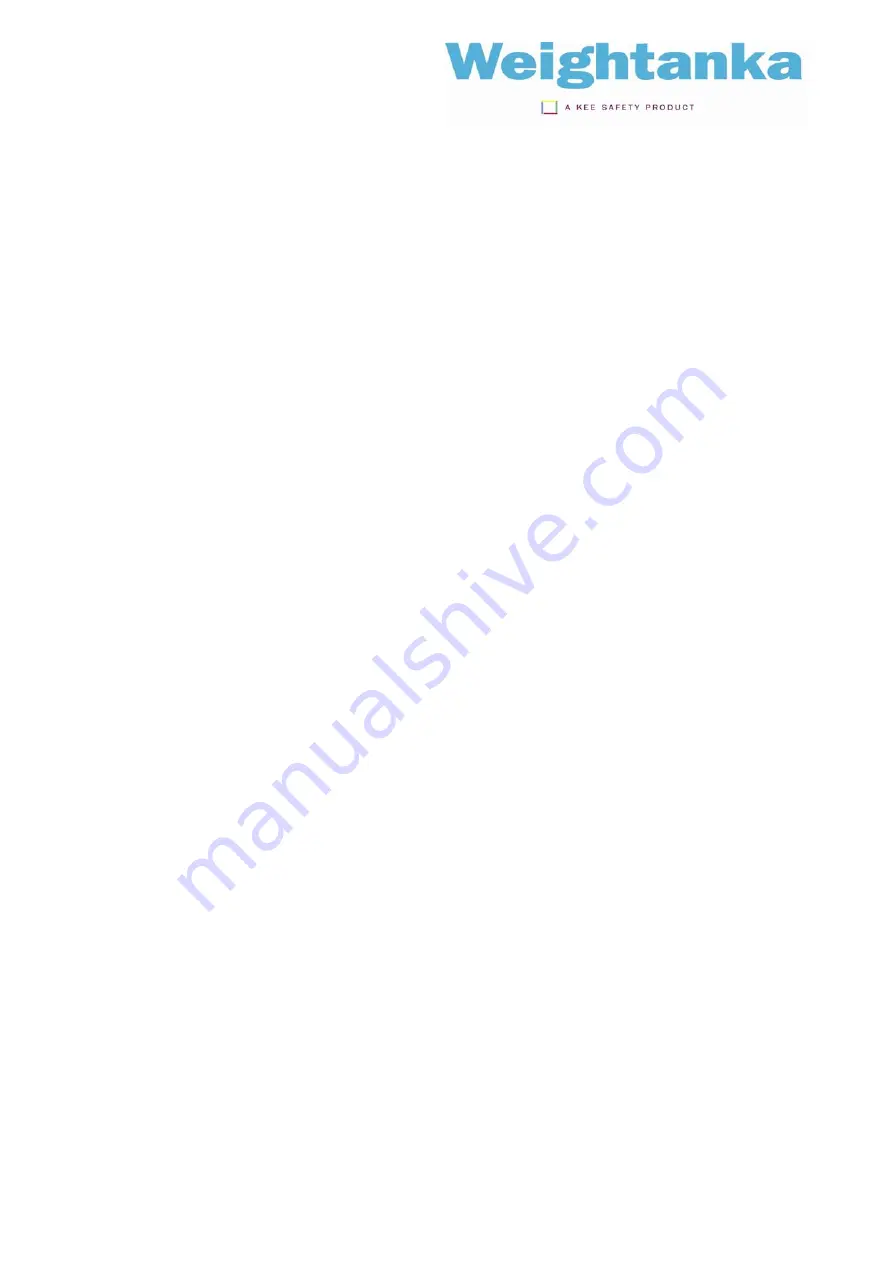
Using
Weightanka
2
‐
24
of
28
Regular Obligatory Inspection of Weightanka
General
WARNING! The safety of users depends upon the continued efficiency and durability of their
equipment. It is recognised that checks, inspections and examinations are a contributory factor in
reducing risks. It is essential, therefore, that these inspections and examinations are carried out as
recommended, and as required by National regulations.
Pre-use checks, inspections and examinations should only be carried out by persons competent to do
so. A competent person is defined as a designated person who is knowledgeable of the current
checking, inspection and examination requirements, recommendations and instructions issued by the
manufacturer applicable to the relevant component, subsystem or system. This person should be
capable of identifying defects, should be responsible for initiating the corrective action to be taken and
should have the necessary skills and resources to do so.
Once in place at the worksite, the Weightanka combination should be checked before each use (
Pre-
use check – see below
) to ensure that the whole system functions correctly.
After every week of constant use, every six weeks of intermittent use and on each occasion of re-
assembly, before they are used again, Weightanka should be more closely inspected, e.g. for signs of
damage, to ensure that it is safe for re-use. This inspection (i.e.
interim inspection
) should be
recorded.
At least every 12 months there should be a
thorough examination
(i.e. a detailed inspection, more
thorough than the interim inspection) This thorough examination should be recorded on the Inspection
sheet attached.
Pre-use checks.
Before each use of this equipment, including after initial assembly, carry out a pre-use check to ensure
that it is in an acceptable condition and that it operates correctly. This check should include at least
the points below:
Make a final inspection of the assembled Weightanka. Ensure that all the instructions for their
assembly and location have been followed. Special attention should be paid to the following:
(a) that no part of WeightAnka is positioned less than 2.5m from the roof edge or other opening and
that no change has occurred to the available clear fall distance.
(b) that the patterned surfaces of the rubber-coated base weights are on the underside, in contact with
the roof surface;
(c) that the correct number of weights have been used in the correct configuration, i.e. their position on
the locating pins.
(d) that the roof surface is of an appropriate type and angle and that the surface conditions are
satisfactory.
(e) that the securing pins have been fitted to each locating pin to ensure that the weights are captive;























